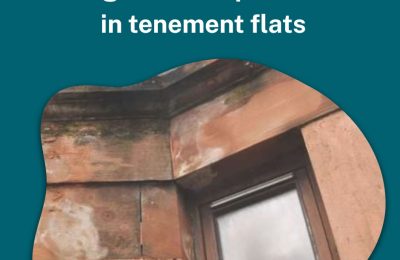Owning a tenement flat can bring many challenges and opportunities to landlords, but the ability to work together with other flat owners is key to achieving a warm, dry and sustainable building. Your property is likely to be your biggest investment, so taking the time to get to know your building and your co-owners makes financial, as well as practical sense. The best way to work together with others in the building is to form an owners’ association. This isn’t hard to do and one can be set up whether there is a property manager or factor in place or not.
For those who self-factor, owners’ associations create a structure to encourage communication between all owners, particularly if there are other landlords in the building.
If the building has a property manager already in place, that factor benefits from dealing with a single point of contact from the association, which can help ensure decisions are made quicker and are more informed, particularly when technical help is required from an architect or surveyor.
Once formed, the association can undertake simple tasks such as regular checks of communal areas, which can be more cost effective than relying on professional help or leaving things to fall by the wayside (which can create more problems and costs in the future).
Owners’ associations are also excellent vehicles for making decisions on appointing or changing property managers, planning repairs and maintenance, selecting contractors and paying for repairs. Having the structure of an association for a building allows for owners to be involved at all stages of the decision making process, helping to avoid conflict and misunderstanding.
An owner’s association works best when there is a formal arrangement, with elements in place, such as a constitution and a maintenance bank account.
Setting the ‘rules’ for the association is important – examples of what they should cover include:
- the purpose of the association
- who can be members
- how meetings are conducted
- finances
You can download a model owners’ association constitution here.
Most effective owners’ associations are well organised, with a committee formed consisting of a Chairperson, Secretary and Treasurer. This helps to spread the work and takes away the threat of the association collapsing if the key person sells their property and leaves.
Scotland is one of the few countries in the world without a legal requirement to have owners’ associations’, however, legislation that will require them in every tenement building is likely coming. But there’s no reason to wait till it’s mandatory and the benefits of having owners communicating and ensuring their building is in good repair is one that is worth spending time on for your property and your tenants.












